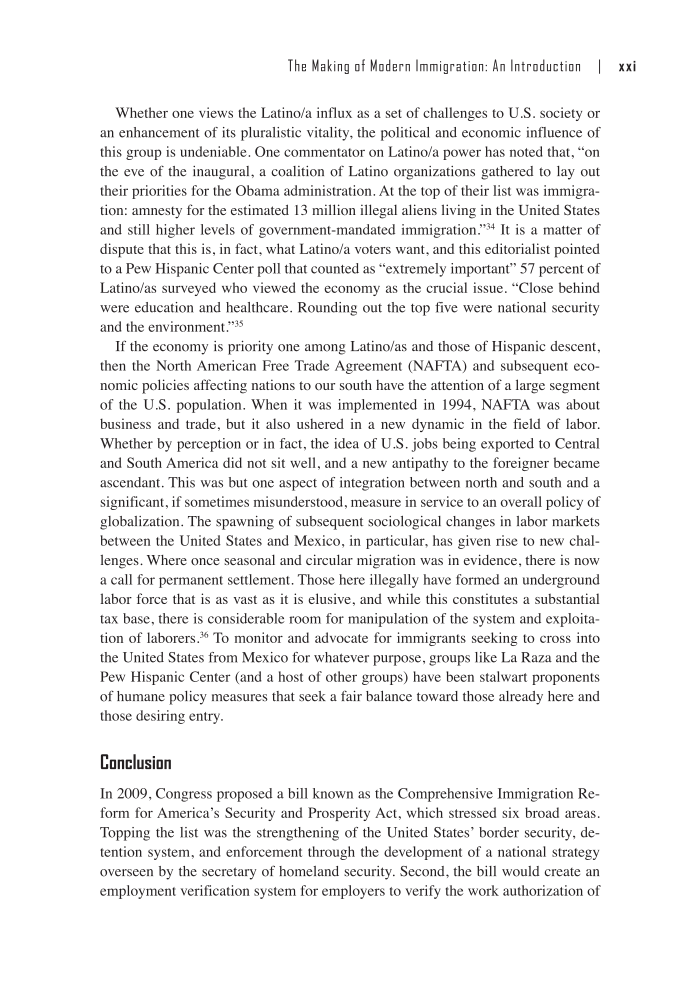The Making of Modern Immigration: An Introduction | xxi Whether one views the Latino/a influx as a set of challenges to U.S. society or an enhancement of its pluralistic vitality, the political and economic influence of this group is undeniable. One commentator on Latino/a power has noted that, “on the eve of the inaugural, a coalition of Latino organizations gathered to lay out their priorities for the Obama administration. At the top of their list was immigra- tion: amnesty for the estimated 13 million illegal aliens living in the United States and still higher levels of government-mandated immigration.” 34 It is a matter of dispute that this is, in fact, what Latino/a voters want, and this editorialist pointed to a Pew Hispanic Center poll that counted as “extremely important” 57 percent of Latino/as surveyed who viewed the economy as the crucial issue. “Close behind were education and healthcare. Rounding out the top five were national security and the environment.” 35 If the economy is priority one among Latino/as and those of Hispanic descent, then the North American Free Trade Agreement (NAFTA) and subsequent eco- nomic policies affecting nations to our south have the attention of a large segment of the U.S. population. When it was implemented in 1994, NAFTA was about business and trade, but it also ushered in a new dynamic in the field of labor. Whether by perception or in fact, the idea of U.S. jobs being exported to Central and South America did not sit well, and a new antipathy to the foreigner became ascendant. This was but one aspect of integration between north and south and a significant, if sometimes misunderstood, measure in service to an overall policy of globalization. The spawning of subsequent sociological changes in labor markets between the United States and Mexico, in particular, has given rise to new chal- lenges. Where once seasonal and circular migration was in evidence, there is now a call for permanent settlement. Those here illegally have formed an underground labor force that is as vast as it is elusive, and while this constitutes a substantial tax base, there is considerable room for manipulation of the system and exploita- tion of laborers. 36 To monitor and advocate for immigrants seeking to cross into the United States from Mexico for whatever purpose, groups like La Raza and the Pew Hispanic Center (and a host of other groups) have been stalwart proponents of humane policy measures that seek a fair balance toward those already here and those desiring entry. Conclusion In 2009, Congress proposed a bill known as the Comprehensive Immigration Re- form for America’s Security and Prosperity Act, which stressed six broad areas. Topping the list was the strengthening of the United States’ border security, de- tention system, and enforcement through the development of a national strategy overseen by the secretary of homeland security. Second, the bill would create an employment verification system for employers to verify the work authorization of
Document Details My Account Print multiple pages
Print
You have printed 0 times in the last 24 hours.
Your print count will reset on at .
You may print 0 more time(s) before then.
You may print a maximum of 0 pages at a time.
































































































































































































































































































































































































































































































































































































































































































































































































































































































